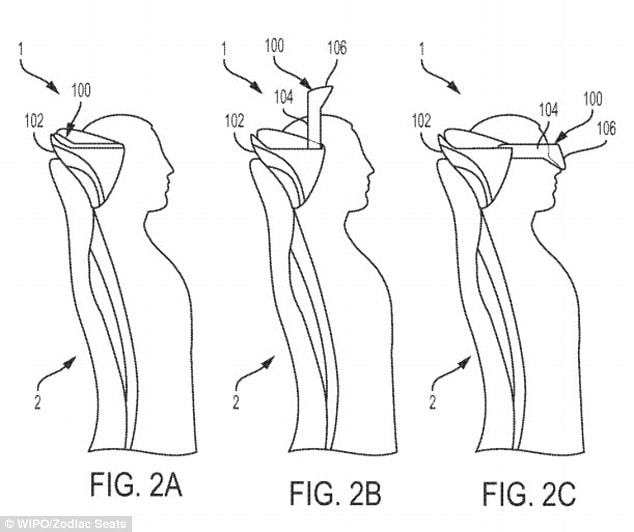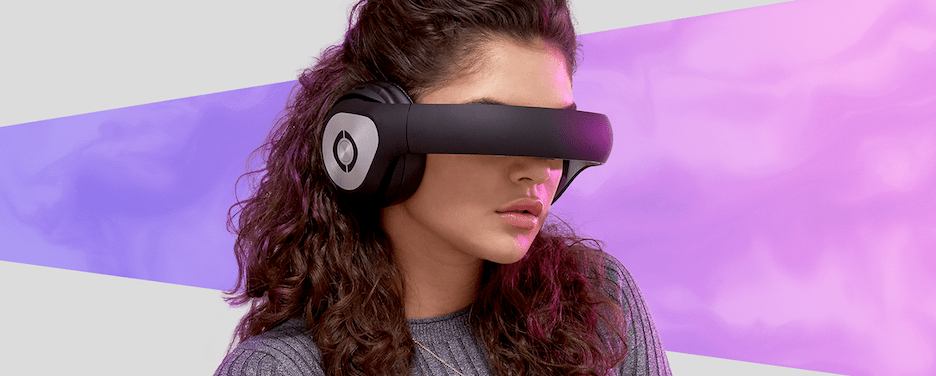In-Flight Entertainment: Immersive Headsets to Keep an Eye On
Share

APEX Insight: Whether as a replacement or enhancement of the seatback screen in economy or as a premium experience for business- and first-class passengers, airlines are exploring immersive headsets as an alternative to traditional in-flight entertainment.
In the high-density reality of economy cabins, immersive headsets present a viable way of improving passenger comfort and satisfaction through distraction. But is it safe for a passenger to be fully immersed in a virtual reality experience? Here are some of the devices that you may see (and experience) in flight in the not-too-distant future, if you haven’t spotted them already.
Samsung Gear VR
Qantas became the first airline to offer a virtual reality entertainment experience in flight when it trialled Samsung Gear VR headsets in first-class cabins on select A380 services beginning in March 2015. The trial also included Sydney and Melbourne International First Lounges, where the headsets were made available from February 2015. “We need to create travel inspiration, and virtual reality is a great way of expressing an airline’s destinations,” said James Price, senior advisor, Entertainment, Qantas, who presented on the airline’s VR experiment at APEX MultiMedia Market. While the results of the trial were not widely reported, Price did cite the heaviness of the Samsung Gear, which weighs almost a full pound before attaching the mobile phone, as something to consider when attempting to integrate VR headsets into the in-flight experience.
Skylights Theater
The Skylights Theatre isn’t a VR headset, but rather a new in-flight entertainment system with immersive cinema glasses for 2-D and 3-D film viewing. According to Skylights’ CEO David Dicko, the Skylights Theatre differs from typical VR headsets in that it’s ultra light and comfortable, fully autonomous (in terms of both video feed and power) and airline ready €” easy to use and certified with early-window movie content approval. XL Airways was the first airline to trial Skylights Theatre in February 2016, and several other airlines have shown interest.

Zodiac Seats US Visor
Zodiac Seats US recently filed a patent for a headrest with an integrated visor that would allow passengers to view still images, 3-D video or even holographic video from an airplane’s in-flight entertainment system or a personal device. According to the filing, “the visor may provide a semi-immersive entertainment experience, allowing a passenger to focus on entertainment or multimedia without being disturbed or disrupted by the surrounding environment, but also preventing claustrophobia or discomfort from complete enclosure.” The outside surface of the visor could be programmed to display messages for cabin crew, enabling passengers to simultaneously be immersed in IFE and interact with the outside environment in the cabin.

Avegant Glyph
Phitek is working with Avegant to explore turning the Glyph, which is currently a consumer product, into an in-flight entertainment device offered by airlines. The Glyph simulates the experience of watching an 80-inch television screen that’s about 5 feet away, but, because it’s semi-immersive, it would allow passengers to retain awareness of their surroundings. Some passengers are already using their personal Avegant Glyphs in-flight. “Due to safety reasons, it’s important that the flight attendant can communicate with passengers and that passengers can interact with their environment,” explains Eric Trabold, Avegant’s Multinational Sales and Business Development executive. Phitek and Avegant displayed the Glyph at this year’s Aircraft Interiors Expo in Hamburg. According to Chris van der Loo, Phitek’s Product Marketing director, “feedback from airlines was extremely positive. Airlines are always looking for a competitive edge when it comes to in-flight entertainment, and the Glyph is a viable option for providing that competitive edge.”



